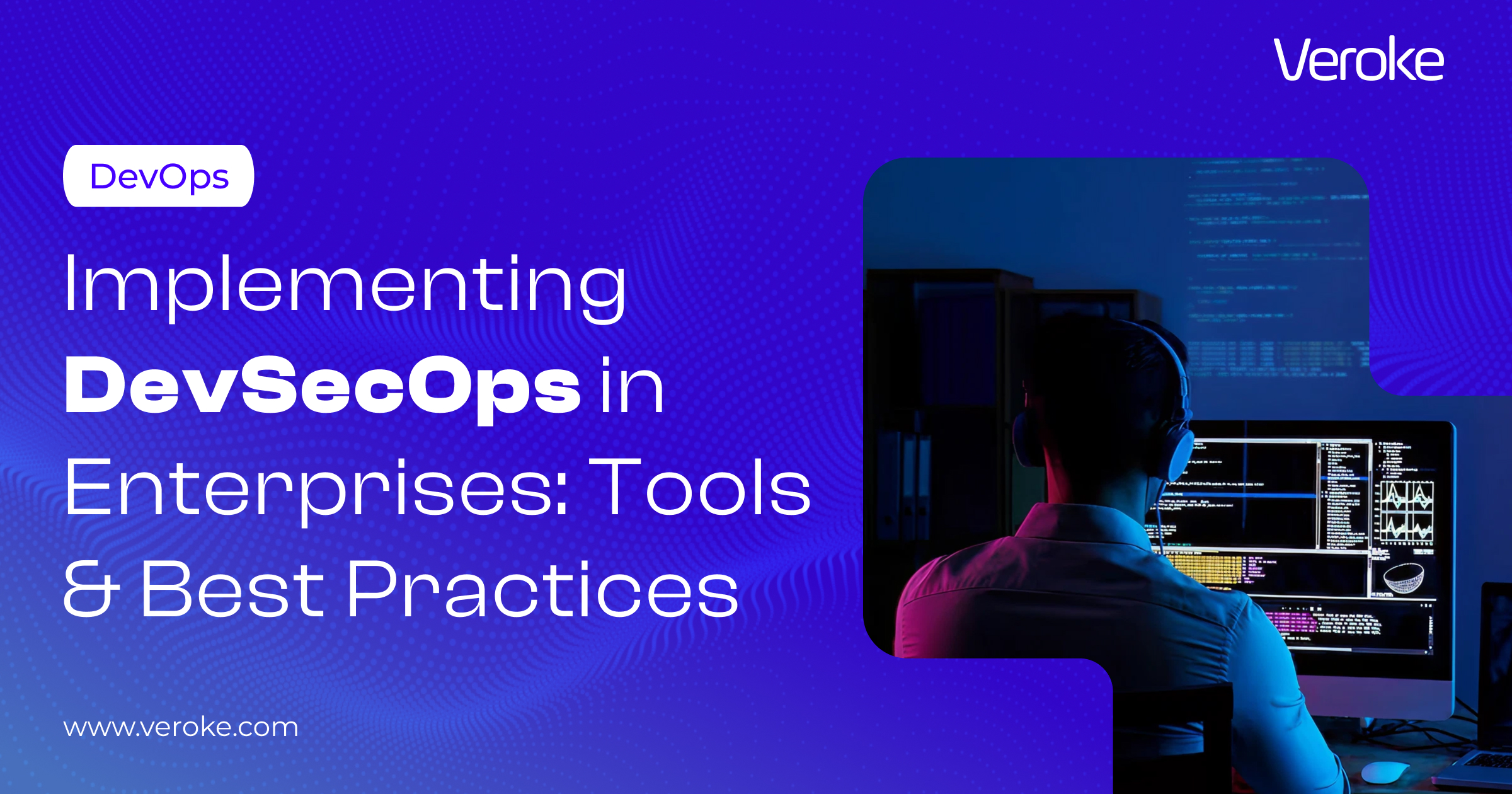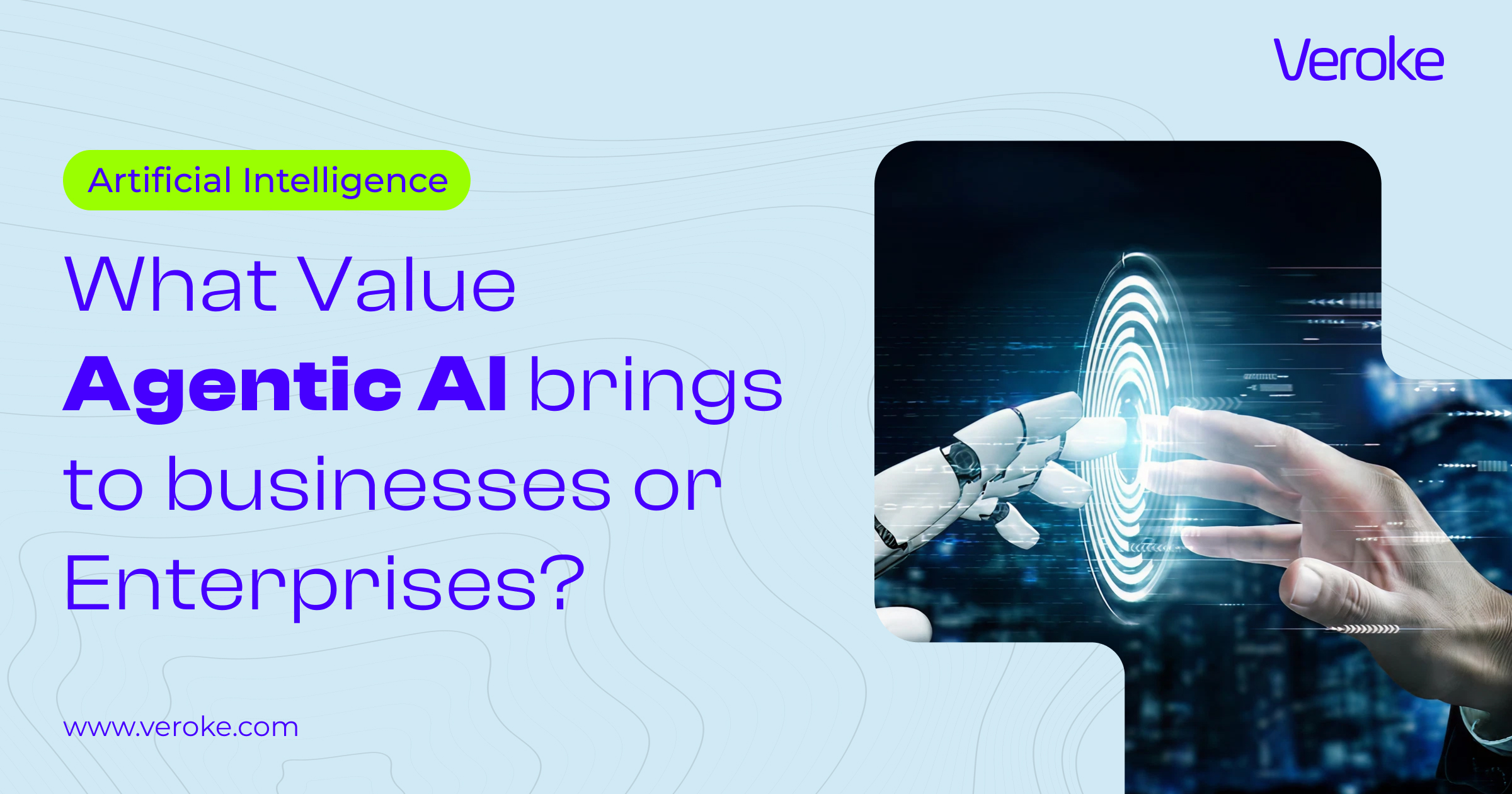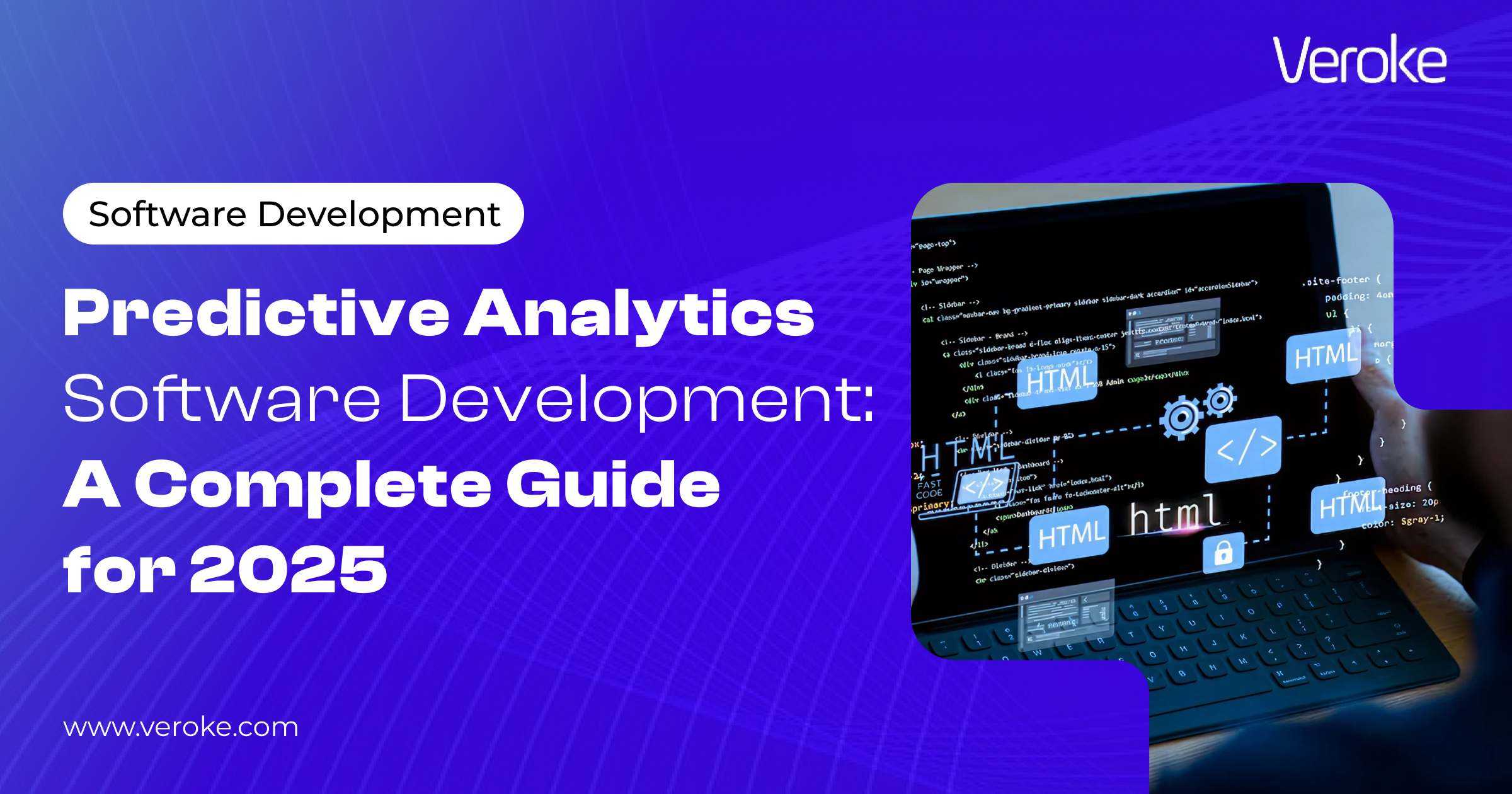Overview
Inside Saudi’s Tech Transformation
Get exclusive weekly insights into how the Kingdom is powering Vision 2030.
TL;DR
- GenAI accelerates every stage of product development – ideation, prototyping, coding, testing, and feedback.
- AI tools generate ideas, designs, and code, helping teams focus on creativity and strategy instead of repetitive tasks.
- Automating workflows with GenAI cuts development time and reduces costs without compromising quality.
- AI-driven feedback and analytics refine MVPs based on real user insights.
- Veroke combine GenAI’s efficiency with expert oversight to build high-quality, scalable MVPs – smarter and faster.
Building a product used to take months of planning, hiring, and endless iterations.
But with Generative AI (GenAI), the trend is changing.
We’re now seeing teams go from idea to MVP in a matter of weeks. Not by cutting corners, but by using AI to handle parts of the process that used to slow everyone down, like writing code, generating UI designs, and even testing.
Gartner predicts that by 2026, over 80% of software engineering projects will use GenAI coding assistants in some form. These tools are helping teams cut development time, lower costs, and deliver better results faster.
And this isn’t just for big tech companies. Startups, product teams, and innovation units are all using GenAI to move faster, reduce costs, and build smarter.
In this post, we’ll walk you through how GenAI can fast-track your product from concept to MVP, without burning through your budget or your dev team’s energy.
Whether you’re a founder validating a new idea or a product owner scaling fast, this guide is for you.
What is an MVP and Why It Matters in the Age of GenAI?
A Minimum Viable Product (MVP) is the simplest version of your product built to solve a real problem with just enough features to test your idea with real users.
It’s not about perfection—it’s about learning fast and launching smarter.
Instead of spending months polishing every detail, you ship a working version, gather feedback, and improve based on what users actually need.
MVP development has always been a smart way to validate ideas, cut unnecessary costs, and reduce time to market.
But now, with GenAI in the picture, that process is moving even faster.
GenAI tools can generate code, design user flows, write content, and even simulate user interactions. Allowing teams to focus on solving problems while AI handles the time-consuming tasks.
In short, it is making MVPs not just faster to build, but smarter from day one.
Benefits of GenAI in Product Development
When you’re building a product from the ground up, time and resources are always tight. GenAI helps you move faster, cut costs, and make better decisions from day one.
Here’s how it gives your team a competitive edge:
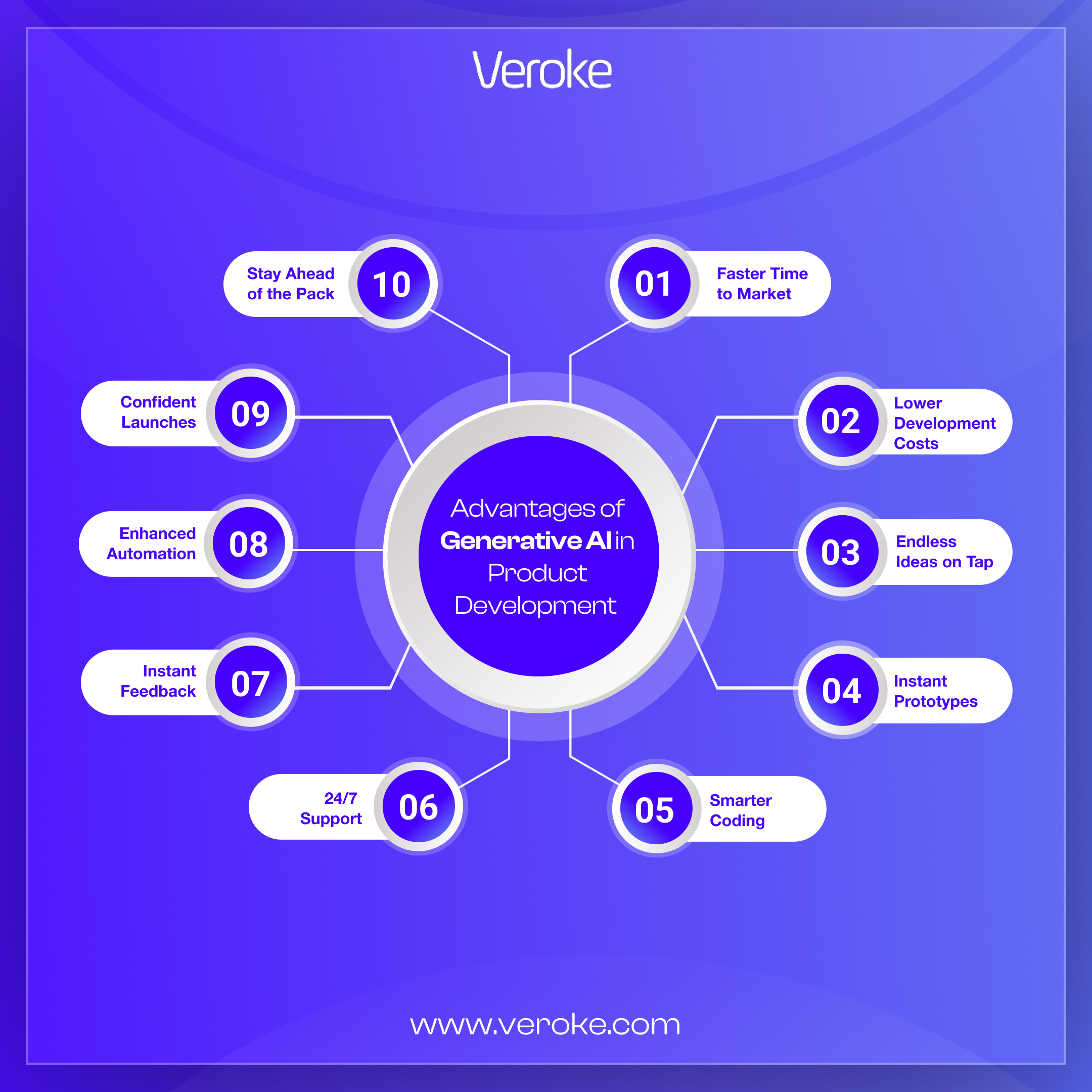
Benefits of GenAI in Product Development
How GenAI Powers Every Phase of Product Development?
GenAI isn’t just speeding up one part of product development, it’s transforming the entire lifecycle.
From early ideation to launch and beyond, GenAI in software or product development helps teams work faster, reduce manual effort, and make smarter decisions at every step.
Here’s how GenAI adds value across the journey from concept to MVP:
1. AI-Powered Ideation and Brainstorming
In the earliest stage, AI tools can boost creativity and speed up idea generation. Instead of staring at a blank page, teams can prompt a large language model to generate product ideas or refine concepts.
GenAI tools like ChatGPT and other LLMs can supercharge the product ideation phase. Instead of brainstorming ideas from scratch, product teams can prompt AI to generate innovative concepts based on market trends, user needs, or specific target personas.
Ask, “Give me five app ideas for busy parents,” and you’ll get actionable suggestions in seconds. Feed customer reviews into the AI, and it can highlight common pain points or suggest potential product features. This makes AI an always-on brainstorming partner, one that saves hours and expands your creative boundaries.
In practice, AI can also analyze data sources (competitor features, customer reviews, market research) to uncover hidden opportunities. This early-stage intelligence is a big reason why software development is being transformed by AI, making it faster, more data-driven, and more user-centric.
In short, AI-powered ideation tools help refine ideas and validate concepts at lightning speed.
2. Rapid Prototyping with GenAI
Once your idea is locked, it’s time to visualize it. GenAI design tools like Figma AI and Uizard enable lightning-fast UI prototyping and wireframing, helping you quickly move from concept to prototype and MVP. Simply describe what you want: a login screen, a dashboard, a mobile interface, and the AI builds a multi-screen prototype in real time.
AI can also auto-generate copy, suggest layouts, or clean up your visuals. Tools like Midjourney even let you create on-brand icons and graphics. Whether you’re a designer or not, AI makes it easy to iterate on visual ideas without spending days on Photoshop or frontend code.
This is just one of many GenAI use cases for software development, others include AI-assisted coding, test case generation, etc. AI makes rapid prototyping much faster: instead of spending days in Photoshop or code, teams can generate good-enough designs or mockups in minutes.
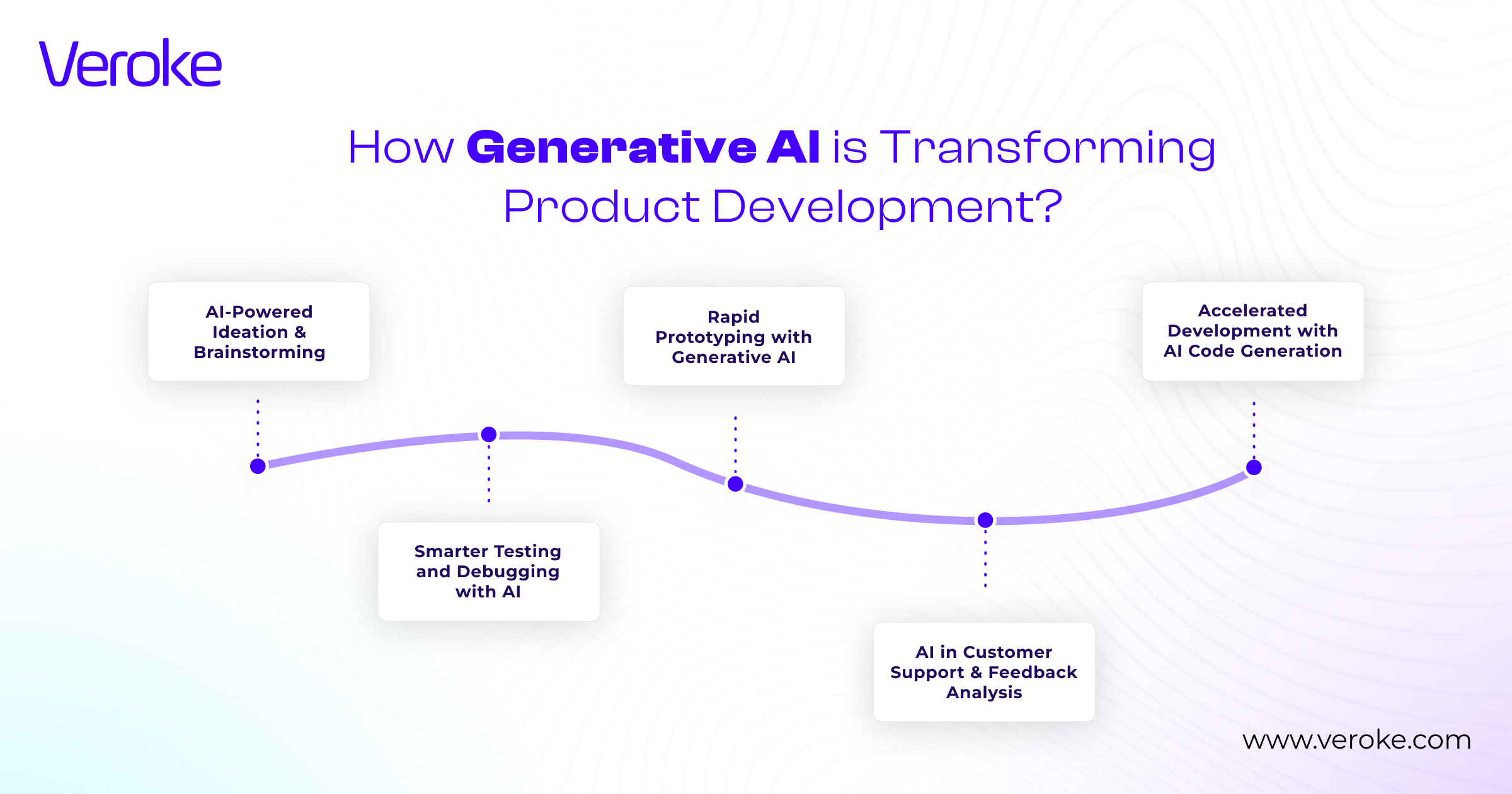
How GenAI is Transforming Product Development?
3. Accelerated Development with AI Code Generation
In the build phase, GenAI becomes your virtual developer. With tools like GitHub Copilot or ChatGPT’s code interpreter, developers can generate boilerplate code, write functions, and even scaffold an entire backend in minutes.
Need a Python script for sorting duplicates? A prompt is all it takes. Building an MVP backend in Node.js? Let AI suggest your APIs and database setup. This dramatically reduces the time spent on repetitive coding tasks and keeps your devs in the flow. AI is transforming software development altogether, not just simply speeding things up.
While AI code still needs review (AI can make errors or inefficient code), it drastically shortens the initial development time. By reducing manual typing and providing instant code snippets, GenAI turns hours of coding into minutes, a huge productivity boost for MVP development.
4. Smarter Testing and Debugging with AI
Testing doesn’t have to be tedious. GenAI can create unit tests, simulate edge cases, and even debug code by analyzing error logs and identifying logic flaws.
Tools like Microsoft IntelliCode and ChatGPT act as QA co-pilots, suggesting fixes or highlighting problematic patterns before they reach production.
While human review is still essential, AI dramatically speeds up the testing cycle and increases code reliability, essential for launching a stable MVP.
Some advanced tools use AI to flag potential errors in real time. By automating routine QA tasks and giving hints during fixes, AI allows small teams to build more reliable MVPs faster, with fewer blind spots.
5. AI in Customer Support & Feedback Analysis
Even after an MVP is in users’ hands, GenAI adds value. From powering smart chatbots to summarizing user reviews, AI tools help manage support and feedback at scale. It can even automate user experience research by analyzing behavioral data, sentiment, and pain points across platforms.
AI can draft responses to FAQs, handle support tickets, or distill large volumes of user feedback into clear action items. One prompt, “What are users complaining about most?”, can turn messy data into prioritized insights, allowing teams to refine and improve their MVP faster than ever.
Thus, GenAI makes post-launch feedback more manageable and insightful, effectively closing the loop on the MVP learning cycle.
Putting GenAI into Action in Your MVP Strategy
To get real value from GenAI in your MVP journey, it’s not just about speed — it’s about smart execution.
A user-driven, outcome-focused approach ensures you’re solving the right problems and building something scalable from the start.
Here’s how to make GenAI work effectively in your strategy:
➔ Identify Clear Objectives
Start by defining what you want GenAI to achieve, whether it’s speeding up development, automating design, improving content creation, or enhancing user personalization.
➔ Select the Right Tools and Platforms
Choose AI models and platforms that align with your specific use case. Tools like OpenAI’s Codex for code generation or Figma AI for design can significantly accelerate early-stage development.
➔ Build a Cross-Functional Team
Ensure collaboration across product managers, designers, AI engineers, and developers. A multidisciplinary team helps ensure AI capabilities are thoughtfully and effectively integrated.
➔ Run a Pilot or Proof of Concept
Before a full rollout, build a small prototype or proof of concept to evaluate GenAI’s impact within your MVP. Use feedback to refine your approach and minimize risk
By following these steps, companies can strategically harness GenAI to streamline MVP creation, reduce resource strain, and deliver innovative products that align closely with user needs and market demands.
Build Smarter and Faster with Veroke
At Veroke, we combine the speed of GenAI with the precision of expert-led development. From prototyping and UI design to code generation and launch support, we use AI to streamline every step, without compromising quality, performance, or security.
What sets us apart is how we balance automation with human oversight. Our team reviews and refines every AI-generated output to ensure it aligns with your goals, protects your data, and meets high technical standards.
Whether you’re a startup founder with a bold idea or a product team looking to speed up delivery, we’re here to help you move fast.
Let’s build your next MVP, smarter and faster.
Talk to our team today and see how GenAI can help bring your product to market with confidence.
FAQs
1. How can AI help accelerate the process of product innovation?
AI shortens development cycles by automating repetitive tasks, speeding up prototyping, and streamlining testing. Generative tools further accelerate design and code creation.
2. How will generative AI change the way we work?
GenAI is reshaping how we work, boosting creativity, automating routine tasks, and transforming industries and roles across the board.
3. Why is MVP important?
Focusing on an MVP offers a low-risk way to test your idea before investing thousands, or even millions, into a full-scale product.
4. How to go from idea to MVP?
In software development, the path from idea to minimum viable product (MVP) involves defining the core problem, building only essential features, and rapidly iterating based on real-user testing and validation.
5. How do you build a successful MVP?
To build a successful MVP, focus on solving one core problem, keep the feature set minimal, and ensure it delivers real value to early users. Gather feedback, test continuously, and iterate based on real-world usage.
Want to know more about our service.
Inside Saudi’s Tech Transformation
Get exclusive weekly insights into how the Kingdom is powering Vision 2030.
Transform your Ideas into a Digital Reality
Get scalable, customized solutions for your business.


